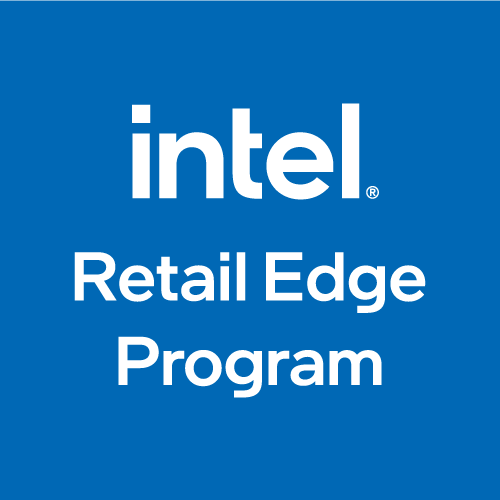 Over the years, millions of dollars have been diverted from building a once robust community of retail brand advocates to fueling social media influencer campaigns. While influencers have helped create awareness in certain areas, this trend has overlooked a crucial fact: the real heartbeat of the customer lives much closer to home—on the retail sales floor.
Over the years, millions of dollars have been diverted from building a once robust community of retail brand advocates to fueling social media influencer campaigns. While influencers have helped create awareness in certain areas, this trend has overlooked a crucial fact: the real heartbeat of the customer lives much closer to home—on the retail sales floor.
This reallocation of resources has weakened a company's most powerful brand ambassadors—the retail salespeople—resulting in a noticeable decline in brand affinity and fewer product recommendations at the point of sale. Ultimately, this impacts what truly matters: sales.
Social Media Influencers vs. Retail Salespeople: A Comparative Analysis
- Proximity to the Customer:
- Social Media Influencers: While they may reach broad audiences, influencers often lack direct interaction with customers who are ready to make a purchasing decision. Their relationships with followers are largely one-to-many and can feel impersonal.
- Retail Salespeople: Directly embedded in their communities, salespeople engage with customers face-to-face, build personal relationships, and tailor recommendations based on real-time needs. They are more than just salespeople—they are trusted advisors who understand the nuances of their local customer base. When a salesperson advocates for a brand, that trust translates into real influence at the cash register.
- Measurable Impact on Sales:
- Social Media Influencers: The ROI of social media influencer campaigns is often difficult to measure. Metrics like "views," "clicks," and "engagement" are useful for tracking awareness, but they don't necessarily correlate to direct sales. These measurements are often esoteric, detached from the concrete outcomes that matter most to a company.|
- Retail Salespeople: Their influence is quantifiable through store-level sales data. There is clear evidence showing there is a positive impact on sales when retail staff are well-trained and motivated to advocate for a brand. In fact, the contrast between well-trained and poorly trained stores often reveals a significant increase in sales of key product lines, showing that investment in this area delivers measurable and predictable returns.
- Community Trust and Brand Affinity:
- Social Media Influencers: Create awareness, but their advocacy is often transient and transactional. The same influencer might promote competing brands, diluting their credibility and making it difficult for customers to discern genuine support from paid promotion.
- Retail Salespeople: Their advocacy is vastly different, earned through hands-on experience with the product and trust built over time. Recommendations are based on direct knowledge and experience, fostering deeper brand affinity. This is the type of connection that results in repeat purchases, long-term loyalty, and customer satisfaction.
- The Power of Local Influence:
- Social Media Influencers: Often have vast but dispersed follower counts over different regions or even countries, making it challenging for their recommendations to resonate on a local level.
- Retail Salespeople: Possess localized influence and are connected to their communities with an intimate understanding of the preferences and needs of local customers. They are local influencers who carry weight and can impact neighborhoods or regions, driving brand loyalty more effectively than remote influencers.
The Case for Reinvesting in Retail Salespeople
Given these contrasts, it's clear that brands should reconsider their investment strategies and allocate more resources to empower retail salespeople as brand advocates. While social media influencers play a role in building awareness, it is the retail salespeople who are at the critical intersection where decisions are made and transactions occur. They are not just passive observers—they actively shape purchasing decisions, influencing the customer directly at the point of sale.
Investing in retail salespeople has a direct and measurable impact on sales:
- Training programs that educate and motivate retail staff can dramatically boost brand performance on the sales floor.
- Stores with well-trained staff in a brand's products show consistent sales improvements compared to those stores with lower levels of training.
- These improvements can be tracked through store-to-store comparisons, providing clear, data-driven evidence of the value of this investment.
By enhancing the knowledge, engagement, and motivation of retail salespeople, we can create a loyal, energized army of brand advocates that no social media campaign can match. These are advocates who live in the same communities as their customers, understand their needs, and are positioned to drive real, measurable sales every single day.
Conclusion: Balancing Investment for Optimal Results
While influencer campaigns are often flashy and buzzworthy, their impact on sales remains elusive and difficult to quantify. Retail salespeople, by contrast, provide a clear, more measurable return on investment and have proven time and again that when empowered and trained, they drive significant sales growth.
It's time for brands to recalibrate focus. Rebuilding investment in retail salespeople—those who are closest to the customer and the community—will amplify a brand's voice where it matters most: on the sales floor, where real purchasing decisions are made. This shift is not just a nod to the past; it's a smart, future-facing strategy that will capture both the hearts and the wallets of customers, driving sustained growth and brand loyalty.
The optimal strategy likely involves a balanced approach, leveraging the broad reach of social media influencers while significantly reinvesting in the power of personal, face-to-face interactions facilitated by well-trained retail sales personnel. By striking this balance, brands can create a comprehensive marketing strategy that builds awareness online and converts that awareness into sales on the ground.
Discover how the Intel® Retail Edge Program keeps sales associates knowledgeable about the latest Intel® products.

This article originally appeared on LinkedIn here.
Notices and Disclaimers
© Intel Corporation. Intel, the Intel logo, and other Intel marks are trademarks of Intel Corporation or its subsidiaries. Other names and brands may be claimed as the property of others.

